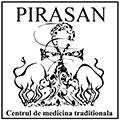The term “anemia” is used in medicine to define the incapacity of the red blood cells of carrying properly the oxygen through the human body. This blood disorder occurs because the hemoglobin molecule is unable to carry and release the oxygen molecules, as result of certain more serious diseases or because of factors generating an alteration in the protein structure of the molecule and/or a diminishing in the number oferythrocytes in the body.
The red blood cells are produced in the bone marrow in cooperation with the rest of the “thesaurus” organs (kidneys, lungs, pancreas-spleen, liver, heart). However, in order that they should reach maturity and be released into the blood flow, there is a number of conditions that must be complied with, such as:
- an optimum level of iron in the body. Iron is a vital component of the hemoglobin molecule, the organic substance diffusing the indrawn oxygen through the body. Consequently, iron deficiencies are one of the main causes of anemia
- a good condition of the kidneys. The kidneys secrete erythropoietin, the hormone involved in differentiating and proliferating the erythrocytes. Renal insufficiencies or severe renal disorders trigger a diminishing in the number of the erythrocytes
- a functional balance between the activity of the kidneys, of the bone marrow and of the nutrients existing in the body
- supply of the necessary amount of nutrients by a balanced diet
Depending on the cause, there can be distinguished several types of anemia:
- Iron deficiency anemia (the most frequent form of anemia; the iron deficiencies affect the protein structure of the hemoglobin and the way it carries the oxygen to the tissues). Anemia caused by heavy hemorrhages: heavier menstrual flow, lesions or internal lesion-causing diseases such as gastro-intestinal ulcer, colorectal cancer, etc.
- Anemia associated to chronic diseases that have generated it: a very frequent form with the cancer patients or with patients with severe infections; usually, it occurs in long-lasting diseases
- Pregnancy-associated anemia: the women’s body is subject to major changes during pregnancy and most of its resources are directed to assure a healthy growth of the fetus. Consequently, the daily iron supply must be increased, in order to prevent this type of anemia
- Anemia caused by renal dysfunctions or disorders: the renal disorders diminish the erythropoietin level in the blood, the hormone involved in the production of red blood cells
- Anemia caused by a deficient alimentation, with low supply of vitamins and minerals. The level of hemoglobin in the blood is influenced by the concentration of iron, folic acid and B12 vitamin. Short of these elements in the necessary amounts, the erythrocyte production will also decrease
- Alcohol-abuse-related anemia (very large amounts of alcohol cause vitamin and mineral deficiencies in the body; they also derange the erythrocytes production, a context favoring anemia)
- Anemia caused by diseases of the bone marrow (the diseases of the bone marrow decrease the number of the erythrocytes in the body, as is the case of leukemia or other diseases of the bone marrow)
- Aplastic anemia (caused by viral infections damaging the structure of the bone marrow and reducing the production of red blood cells, leukocytes and thrombocytes)
- Hemolytic anemia (a form of anemia where the red-blood cells lose their functions because of a strong process of hemolysis; the whole process is defined by the premature death of the erythrocytes or by their increased mortality rate in comparison with their production
- Pernicious anemia: caused by the malabsorption of B12 vitamin
- Sickle cell anemia (sicklemia is a hemoglobinopathy causing chronic hemolytic anemia, with an aggressive development and vascular obstruction phenomena due to the alteration in shape of the erythrocytes; it is a very rare type of anemia with Caucasians)
- Anemia caused by thalasemia (a hereditary hematologic disorder defined by a small number of erythrocytes)
As symptomatology, there can be noticed fatigue and asthenia, general weakness, breathing disorders, cardiac rate disorders and cardiac murmur, tegument pallor, angina pectoris, dizziness, giddiness and lipothymy, hypotension and splenomegaly in particular cases.
Causes
The dysfunctions in the process of erythrocyte differentiation and proliferation occur when areas of bone marrow have been compromised by damage to the local innervation and vascularization or when there are disorders at two or several “thesaurus” organs. At the same time, repeated or very serious damages to the same osseous area may cause degradation of the bone marrow or of the full organs’ functions.
Treatment
In order to cure anemia, the erythrocyte-proliferation processes must be resumed at a normal rate. There must also be striken a balance between these processes and the destruction rate of the aged cells. Where anemia is also caused by disorders of the thesaurus organs, these will be cured by normalizing the energy flow and reactivating the dysfunctional acupoints. Active substances from specific herbs are used in order to regenerate the innervation and the vascularisation in the sclerosed areas of bone marrow. The processes are enhanced of assimilation of iron and necessary nutrients for a good development of erythropoiesis. At immune level, the processes are enhanced that cleanse the body of pathogen agents and infections. Depending on the type of anemia and on its triggering causes, the treatment protocol will be adapted to restore erythropoiesis within normal limits.

